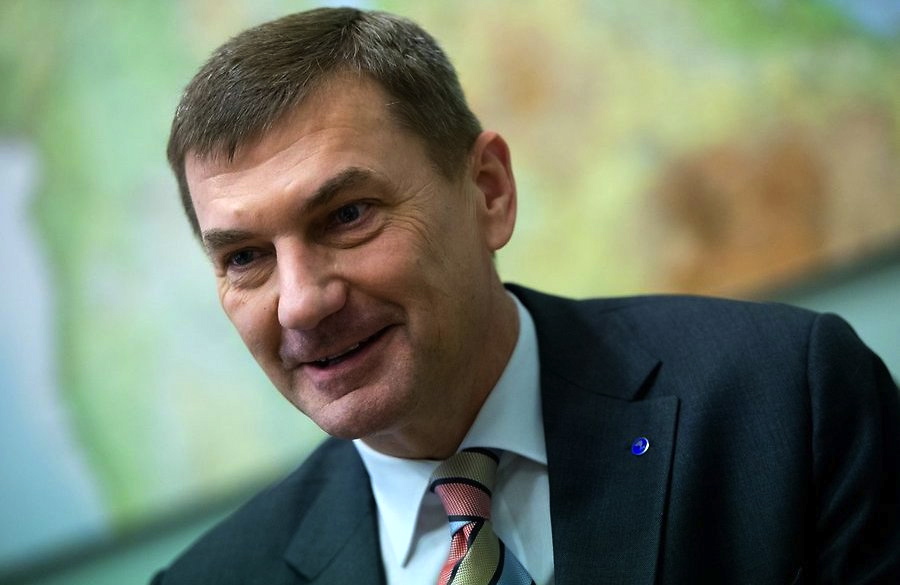Earlier this week, Estonia’s prime minister Andrus Ansip stepped down after nine years leading the tiny Baltic country of just 1.3 million.![]()
His departure brings even more change to the Baltic states — Laimdota Straujuma became Latvia’s new prime minister in January following the resignation of Valdis Dombrovskis over the collapse of a supermarket roof near Riga, the Latvian capital, that killed 54 people.
Ansip and Dombrovskis share a lot in common, both in terms of politics and the policy trajectories of their governments.
Like Ansip, Dombrovskis stepped down having presided over difficult economic reforms that stabilized their country’s respective credit ratings and credibility with global debt markets and that helped unleash economic growth after the immediate downturn of the global economic crisis and the European debt crisis. Both prime ministers, uncharacteristically, won reelection in the middle of implementing some fairly hefty budget cuts (enough to lower Estonian public debt to just 5.7% of GDP as of 2012) — Ansip most recently in the March 2011 elections, when Reform actually gained two seats (for a total of 33) in the 101-member Riigikogu, the Estonian parliament.
Ansip ushered his country into the eurozone in 2011, the first of the Baltic states to do so, and Dombrovskis’s government followed, with Latvia acceding to the eurozone on January 1 of this year.
Just as Latvia’s governing center-right Vienotība (Unity) faces a difficult election in October later this year, Ansip’s own center-right Eesti Reformierakond (Estonian Reform Party) faces a similarly difficult challenge in elections expected to take place in March 2015.
The major difference is that Latvia, for all its government’s unpopularity, can point to an economy that’s still growing faster than almost any other European country while Estonia’s GDP growth slowed to just 0.7% and 0%, respectively, in the final two quarters of 2013. That follows a sensational Reform Party funding scandal in 2012, known as ‘Silvergate,’ that dampened Ansip’s good-government credentials.
Ansip’s decision to step down as prime minister, in fact, is designed to give his successor a running start at the next Estonian elections. A February TNS Emor poll shows a four-way race in Estonia today: the liberal, center-left Eesti Keskerakond (Estonian Centre Party) leads with 27% of the vote, the more leftist Sotsiaaldemokraatlik Erakond (Social Democratic Party) wins 26%, the liberal, center-right Reform wins 21%, and Reform’s current coalition partner, the more traditionally conservative Isamaa ja Res Publica Liit (IRL, Pro Patria and Res Publica Union) wins 19%.
If the Centre Party, the political home of the vast majority of Estonia’s ethnic Russian population (which comprises just over 25% of the total Estonian population), wins the next election, longtime Tallinn mayor Edgar Savisaar, a relatively controversial figure in Estonian politics (who himself briefly served as prime minister for five months in 1991-92), dogged by longstanding charges of corruption.
All three ‘opposition’ parties, however, have joined Ansip in government at one time or another since 2005 — Ansip’s first cabinet included the equally liberal Centre Party, and his second cabinet, from 2007 to 2011, including both IRL and the Social Democrats.
Though the Estonian president has 14 days (as of Friday, make that 11 days) to choose a new prime minister to lead a new government, it’s almost certain that Ansip’s successor will be Siim Kallas, who founded the Reform Party in 1994. At the time, Kallas was still chair of the Bank of Estonia (winning plaudits, long before the eurozone’s takeoff, for reintroducing the Estonian kroon). With initial success in the 1995 election, Kallas spent the next eight years in and out of government, serving as foreign minister from 1995-96 and as finance minister from 1999 to 2002. He briefly served as prime minister from January 2002 to April 2003, seeing the Reform/Centre coalition government through to the 2003 elections. In 2004, he left for Brussels as Estonia’s representative to the European Commission and, since 2010, Kallas has been one of seven vice presidents of the Commission in charge of transport. International policymakers probably know Kallas best for his role in steering Commission policy during the Eyjafjallajökull volcanic ice crisis that shut down European airspace almost completely in mid-April 2010.
Kallas has not been bashful about his hopes to return to Tallinn to lead a Reform-centered government into 2015’s elections, and Ansip hasn’t been shy about his own intentions to replace Kallas in Brussels. While Kallas has been working on policy at the European level for the past decade, thereby avoiding Silvergate and tough economic policy decisions between 2009 and 2012, he will come to power with the immediate task of turning around the Estonian economy.
When Princeton University and Nobel-winning economist Paul Krugman (it’s now been immortalized in opera form) poured cold water on Estonia’s economic turnaround in June 2012, Estonia’s social democratic president Toomas Hendrik Ilves lashed out against Krugman on Twitter.
Today, though Estonia remains among Europe’s most fiscally responsible countries, it seems headed toward recession and stagnation while the rest of Europe starts to shake off the worst of its economic malaise and the other Baltic states notch some of the European Union’s most aggressive economic growth. If Kallas cannot effect a fairly rapid reversal, his expected second term as Estonia’s prime minister might wind up even shorter than his first.
Photo credit to Tiit Blaat.
